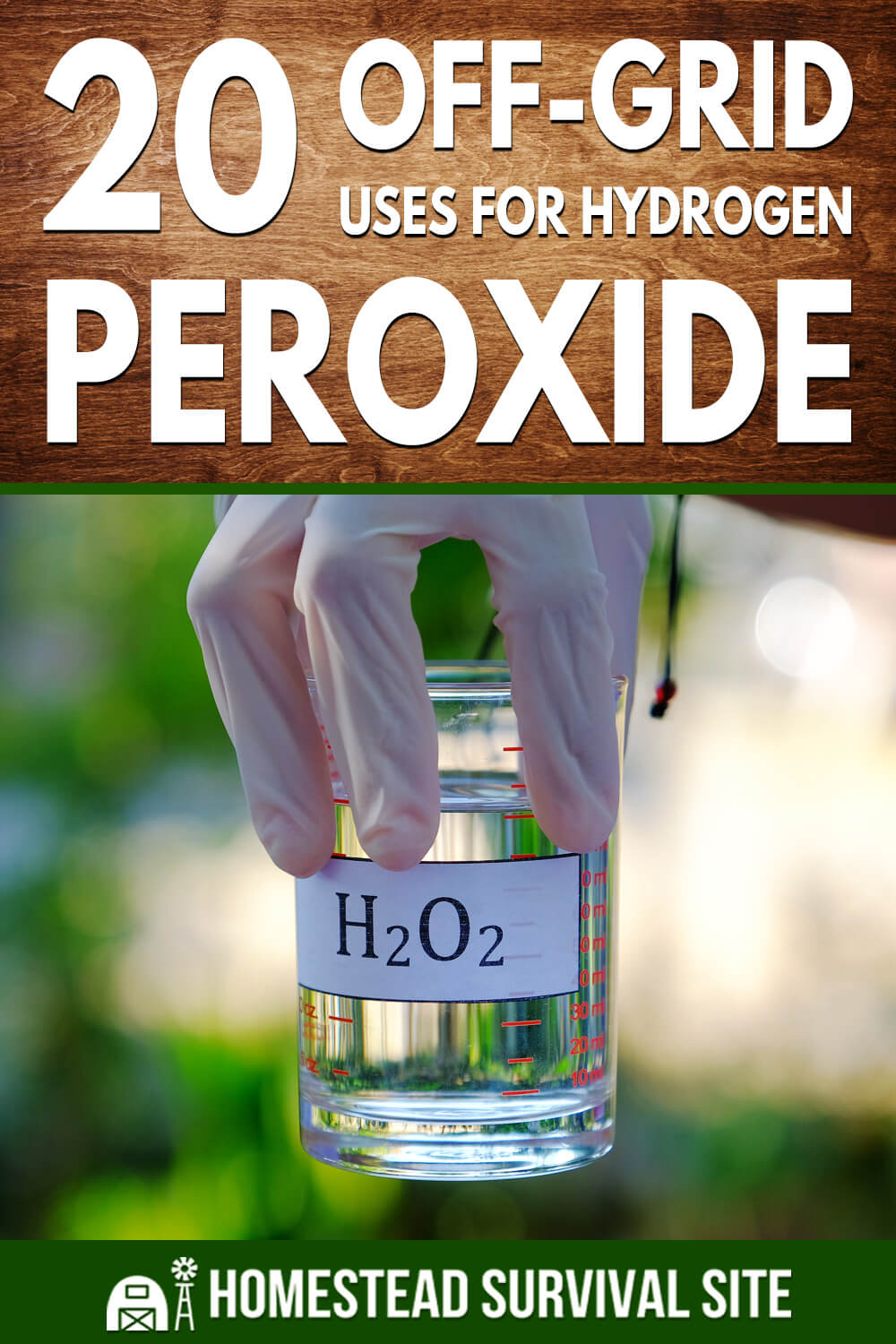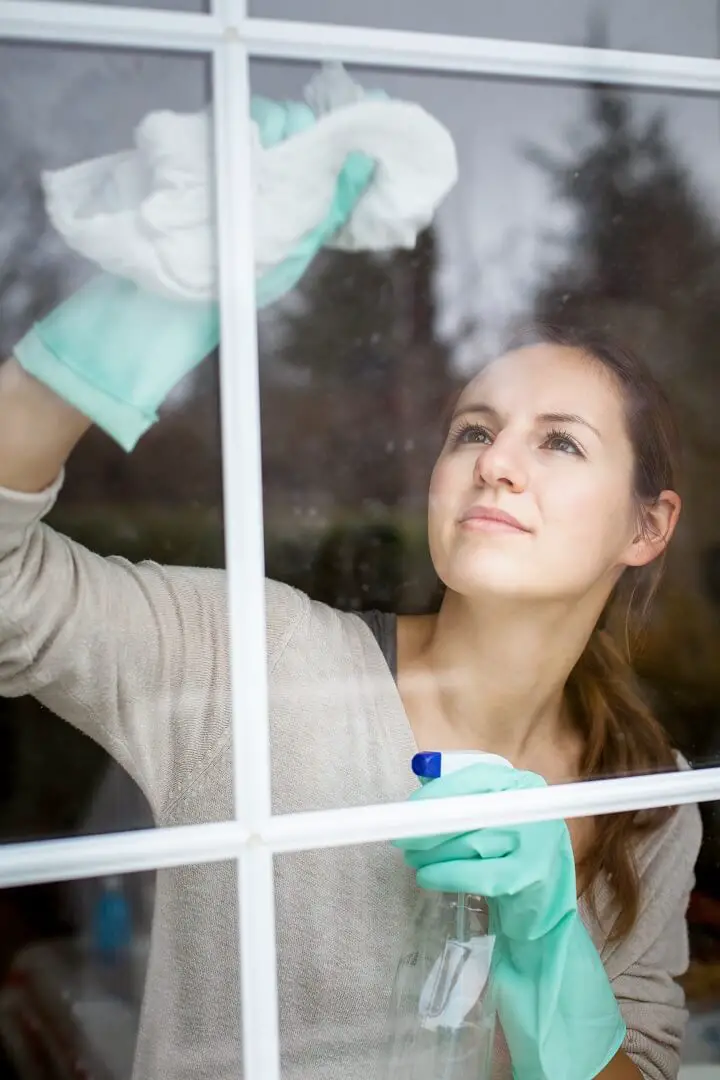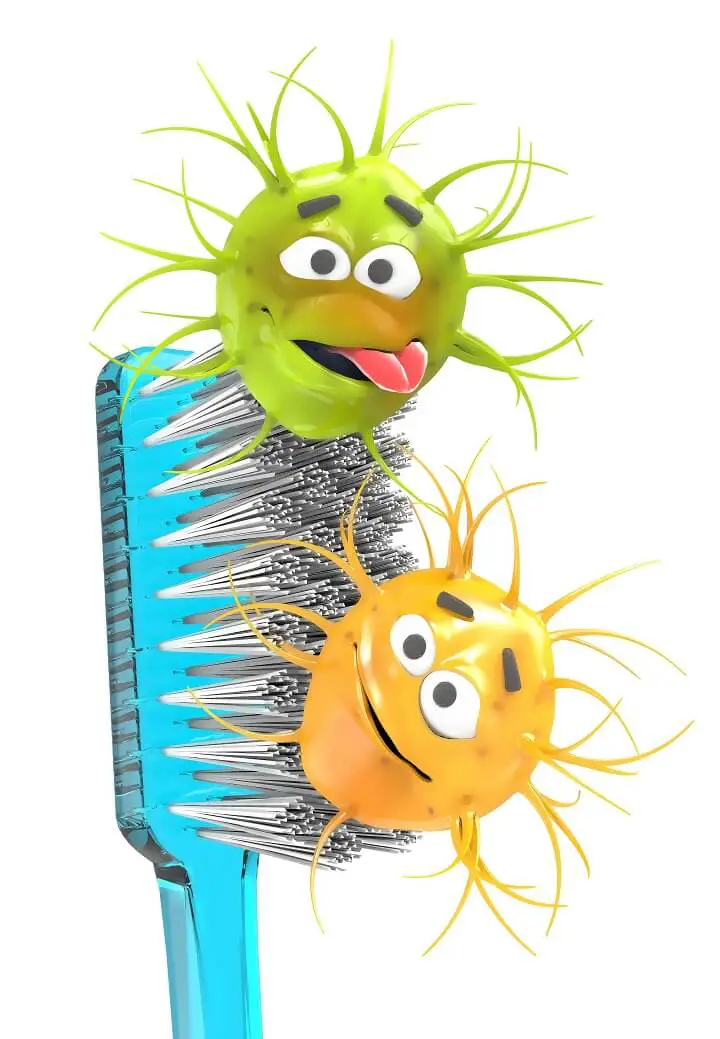[ad_1]

It is that same oxygen molecule that is released when hydrogen peroxide is poured onto the skin (or just about anything else) and starts to foam. During the foaming process, dead skin is removed from the area being cleaned.
Want to save this post for later? Click Here to Pin It On Pinterest!
Hydrogen peroxide is scientifically classified as “Compound H2O2.” It is comprised of two hydrogen atoms and two oxygen atoms. In its pure form, hydrogen peroxide is blue.
History Of Hydrogen Peroxide Use
Throughout the past century, hydrogen peroxide was used in homes and school nurse’s offices to clean and disinfect wounds. The mild antiseptic was known to help deter infection of minor to mild cuts, scrapes, and even burns.
In recent years, hydrogen peroxide has been banned from use as a minor wound antiseptic in schools and many hospitals because some doctors do not feel it can slow down the healing process and could potentially cause “dangerous complications.”
You will have to do your own research on the conflicting modern beliefs on hydrogen peroxide. I still confidently use it on minor human, livestock, and pet wounds without ill effect, but your experiences may differ.
Fans of natural or home remedies often use peroxide around the house as an alternative to chemical-filled cleaners purchased at the grocery store. Thanks to proprietary laws, there is no way to know what goes into much of the household cleaning and beauty care items most folks regularly purchase.
Top 20 Off-Grid Uses For Hydrogen Peroxide
Household Uses
Hydrogen peroxide kills bacteria, yeast, viruses, fungi, and mold spores. The active components in peroxide break down rapidly when they come into contact with either water or air, which is why it is deemed safer to use than chlorine-based chemical cleaners.
Peroxide comes in a variety of “percentages.” It is sold in 3 to 10 percent formulas at most retailers. The most commonly used percentage is 3 – that is the type being referenced for all of the off-grid uses detailed below.
1. Dishwasher Disinfectant
Kill mold and mildew hidden away in all the nooks and crannies of your dishwasher by squirting it with hydrogen peroxide. Focus on spaces in and around the pleats in the utensil basket crevices and traps – all spots where moisture can gather. It is in these areas where E. dermatitidis and fungi are most often found.
2. Sink Disinfectant
Sprinkle baking soda in your dampened kitchen and bathroom sinks. Scrub the sink with a sponge or rag. Rinse with hydrogen peroxide and allow it to settle for about five minutes before running water in the sink to get rid of foodborne pathogens, fungi, and bacteria.
3. Cutting Board Disinfectant
Place the cutting board on a baking sheet or in a baking pan. On a standard size cutting board (wood or plastic) that has been rinsed with soapy water, pour about one cup of hydrogen peroxide. If the cutting board is made of wood and has been used to prepare raw meat, make it two cups.
Rub the peroxide lightly with a clean dish rag, paying extra attention to the knife nicks in the wood. Allow the cutting board to soak for five to ten minutes. Once the fizzing stops, rinse the cutting board with hot water and allow it to air dry completely. Woodcutting boards will take significantly longer to air dry thoroughly than plastic cutting boards.
In a spray bottle, combine about 1 ½ cups of distilled white vinegar and either 5 drops of lemon essential oil or 3 tablespoons of lemon juice.
NEVER combine hydrogen peroxide of any percentage with vinegar. The combination of the two otherwise helpful household products creates a potentially dangerous gas. This is why the cutting board must be allowed to dry completely.
You can stop at the hydrogen peroxide step, but the homemade cleaner is better at killing harmful bacteria. Just squirt the dried board with the vinegar and lemon mix and allow it to dry completely before storing. It is best to hold the cutting board upright when rinsing the peroxide and when squirting with the vinegar mix to promote the full removal of the liquids and the germs they are disinfecting.
4. Kitchen And Bathroom Countertops
Pour hydrogen peroxide into a squirt bottle and spray it on kitchen and bathroom countertops and other hard surfaces. This will rid them of potentially harmful fungi and bacteria.
The peroxide must be applied at room temperature and allowed to remain there for ten minutes before being wiped away. I often just squirt the area and leave the hydrogen peroxide in place to dry and do not rinse it. This multi-purpose liquid is capable of killing both salmonella and E. coli on hard surfaces.
5. Pot And Pan Scouring
I have yet to find a better (quicker and easier) way to remove even thickly baked-on layers of gunk from cookware than hydrogen peroxide. Lightly sprinkle baking soda onto the cooking pans, pots, and utensils. Squirt them with hydrogen peroxide and allow them to soak for roughly one hour before wiping them out with a sponge and rinsing.
6. Caustic Bleach Alternative
Hydrogen peroxide is an active ingredient in my favorite homemade bleach alternative recipe. It took a few mixing failures to come up with a recipe that is superb at cleaning toilets and using on whites in the washer, but the final result was dependable and inexpensive to mix non-bleach “bleach.”
Ingredients:
- ¾ cup of lemon juice
- ¾ cup of hydrogen peroxide
- ¾ cup of baking soda
- 2 cups of witch hazel
- 3 tablespoons of cream of tartar
- 5 cups of water
- 1 tablespoon of citric acid – optional but recommended
- Up to 12 drops of lemon essential oil or 3 tablespoons of lemon juice
Directions:
Simply pour all of the ingredients into a dark container and shake vigorously before using. Hydrogen peroxide quickly loses its potency if exposed to light (plain brown bottle packaging makes a lot more sense now, right?) or excessive heat.
If stored in a dark container – like a bucket with a lid, the homemade bleach mixture should be potent enough for use for about 90 days. You can also cut the recipe in size and pour it into a squirt bottle for immediate cleaning.
7. Fruit And Vegetable Rinse
Keep your veggies crisp and help extend their shelf life by soaking them in hydrogen peroxide. The soak and rinses will help eliminate fungi and bacteria on the vegetables. Soak thicker-skinned vegetables like peppers, potatoes, and carrots for half an hour.
More thinly skinned vegetables like lettuce, strawberries, and tomatoes should only take 20 minutes. It is the bacteria on produce that causes them to turn brown and go bad. Make sure the fruits and vegetables are thoroughly dry before storing them in a basket or refrigerating them.
8. Trash Can Spray
Mix hydrogen peroxide with an equal ratio of warm water to spray in trash cans. The peroxide will not only help eliminate bacteria and gunk from items spilling out of the garbage bag but also reduce odors. I often mix in a couple drops of lemon essential oil or lemon juice for a little extra disinfecting power and scent.
9. Window, Mirror, And Glass Cleaner
While I prefer to use distilled white vinegar to clean mirrors, windows, and other glass items, hydrogen peroxide mixed with equal parts water can also clean and disinfect such household items. You will need to gently wipe away the peroxide before it dries or it will streak.
10. Porcelain Restorer
Dampen porcelain bathtubs, sinks, and other household objects, and then sprinkle baking soda on the area. Soak a sponge in hydrogen peroxide for a few minutes and then scrub the porcelain to remove stains, gunk, and yellowing.
In The Garden
11. Seed Sprouting
Soak seeds in hydrogen peroxide to help the germination process along by softening their outer coating. The most often recommended soaking time for seeds with thick outer coats is about 20 minutes before planting.
12. Plant Fungus Treatment
If your crops or other plants are suffering from fungus or powdery mold, spray them with a mixture of one pint of water and four teaspoons of hydrogen peroxide. The solution should not burn leaves while killing the infection, as long as it is mixed at the proper ratio.
13. Pond Algae
Get rid of algae in your pond without making the water unsafe for your ducks or fish using hydrogen peroxide. Use half a cup of hydrogen peroxide for every 90 gallons of water being treated.
Pets and Livestock
Some veterinarians caution against exposing animals or fish to peroxide. Use your best judgment or talk to your veterinarian.
14. Litter Box Cleaner
Get rid of stinky cat urine smells while disinfecting the litter box by soaking the container in hydrogen peroxide (after washing it with hot soapy water) for about half an hour. Rinse the container with hot soapy water and allow it to dry thoroughly before pouring in fresh litter.
15. Aquarium And Cage Cleaner
Spray hydrogen peroxide in glass aquariums and plastic pet cages to get rid of bacteria, mold, and grime. Soak the aquarium or cage in warm water so the hydrogen peroxide dissipates before putting the fish or other critters back into their home.
Beauty and Hygiene
As noted above, the theories about the health issues of using hydrogen peroxide have changed over the years – and often remain a hotly debated topic. The FDA has classified peroxide as being a “generally recognized as safe” or “GRAS” substance for people to use in low doses. But the same federal agency also maintains hydrogen peroxide may cause skin blistering, burning, or irritation.
If inhaled at high concentrations, hydrogen peroxide might cause tightening of the airways, shortness of breath, chest tightness, and hoarseness. Should hydrogen peroxide get into the eyes, it may cause an abrasion or burning on the cornea.
Vomiting, internal inflammation, or possibly damage to “hollow” organs could occur. The vomiting response to the ingestion of hydrogen peroxide is probably why it was once used in low doses in both humans and animals as a poison treatment.
16. Hair And Beauty Cleanser
Clean hairbrushes, combs, hair picks, and cosmetic brushes with a gentle soap or shampoo. Rinse the soap away and then soak the items in hydrogen peroxide for roughly 10 minutes. Rinse away the hydrogen peroxide and allow it to dry.
17. Oral Care Cleanser
Toothbrush bristles can be exposed to a high amount of bacteria either from your mouth or when openly stored on a bathroom sink or medicine cabinet. Soaking your toothbrush or dental retainer in hydrogen peroxide can remove up to 85 percent of potentially harmful bacteria.
Rinse the oral care item in warm water after soaking it in hydrogen peroxide for about 10 minutes, allowing it to dry completely before storing it.
18. Corns And Callus Softening
Rid the feet of bacteria causing odors, athlete’s foot, and soften corns and calluses by soaking them in hydrogen peroxide. Mix 3 parts water to 1 part hydrogen peroxide and soak feet in the combination for about 25 minutes. Pat or allow to air dry completely before putting socks or shoes back on.
19. Yellowed Nail Treatment
Combine two parts baking soda with one part hydrogen peroxide in a bowl to make a thin paste. Once the fizzing subsides, spread it onto yellowed fingernails or toenails to whiten them. Soak them for about 20 minutes, then rinse.
20. Ear Wax Removal
Tilt your head to one side and place a couple drops of olive oil in the ear followed by a few drops of hydrogen peroxide using a medicine dropper. The thickness of the olive oil can prevent too much of the peroxide from dripping into the inner ear.
Hold your head position for about one minute before tipping it in the other direction to allow the peroxide and olive oil to drop out into a wastebasket or tissue.
Hydrogen peroxide is perhaps the least expensive and most versatile cleaning and disinfectant agent you can have in your home. We keep a couple dozen bottles on our homestead at all times – but they never last very long.
We use peroxide instead of more costly products, not only because it’s cheap and doesn’t contain caustic or unknown chemical ingredients, but because it never fails to get the job done.
Like this post? Don’t Forget to Pin It On Pinterest!
[ad_2]
Source link
Get more stuff like this
in your inbox
Don't Be Left Unprepared
Thank you for subscribing.
Something went wrong.







